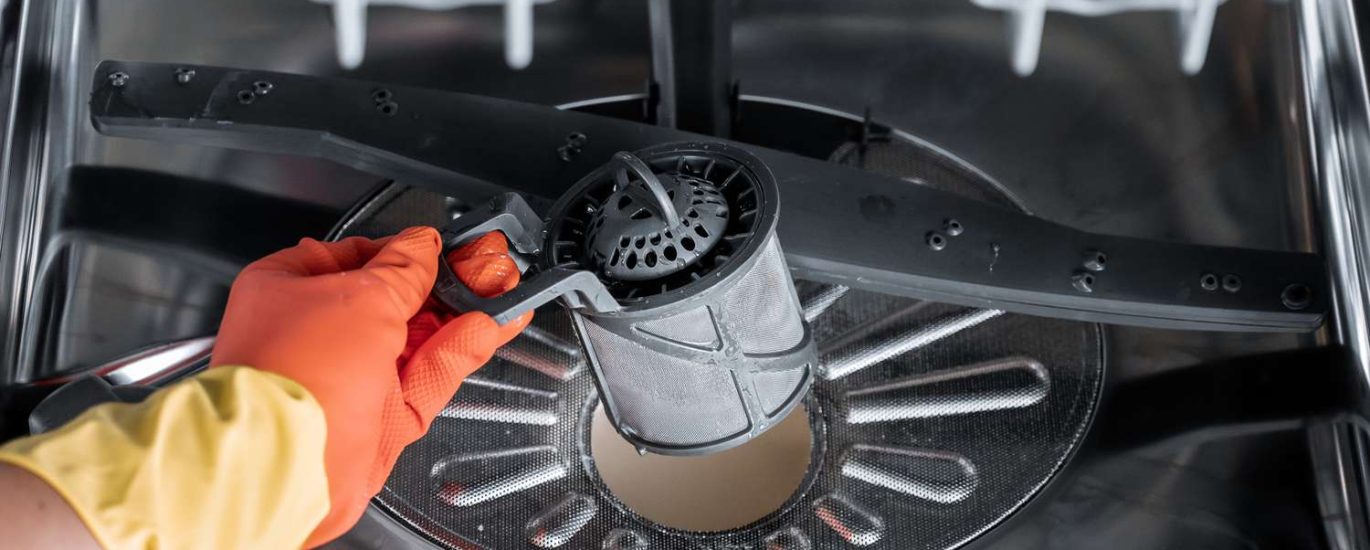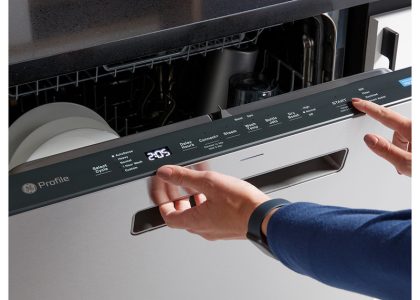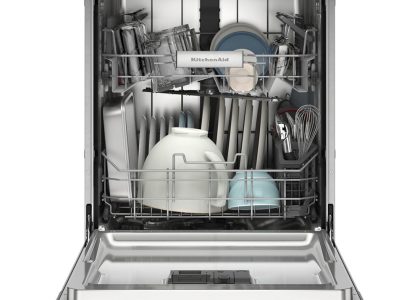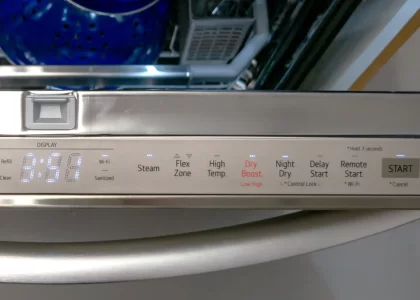The Benefits of Using Vinegar for Dishwasher Maintenance
Using vinegar to maintain your dishwasher has several benefits. Firstly, vinegar is a natural deodorizer. It helps remove unpleasant smells that can build up over time. This is crucial for a machine that deals with food particles daily. Another benefit is that vinegar is excellent for dissolving mineral deposits. These deposits, often from hard water, can clog your dishwasher’s spray arms and filters. Vinegar’s acidic nature helps break down these deposits, ensuring your dishwasher runs efficiently.
Moreover, vinegar is a safe and eco-friendly option. It contains no harsh chemicals, making it a better choice for your home and the environment. It’s also inexpensive and widely available, which makes it a cost-effective solution for dishwasher maintenance. With vinegar, you don’t need to worry about wearing out rubber parts within the machine, as it is gentle yet effective. Lastly, vinegar aids in the prevention of mold and mildew growth, keeping the interior of your dishwasher sanitary and hygienic. All these benefits make vinegar an excellent choice for keeping your dishwasher in top condition.
Preparing Your Dishwasher for Vinegar Cleaning
Before starting the vinegar cleaning process, preparation is key to ensure your dishwasher is ready for a thorough clean. Here are the steps you should take:
- Empty the Dishwasher: Remove all dishes and utensils from your dishwasher. This gives you clear access to the entire interior.
- Check and Remove Debris: Examine the dishwasher’s floor, especially the drain area. Remove any visible food scraps or debris to prevent blockages and allow for a more effective cleaning cycle.
- Inspect the Dishwasher Racks: Pull out the racks to look for stuck-on food particles. Wipe them down if necessary before proceeding.
- Clean the Filter: Most dishwashers have a removable filter. Take it out and rinse under running water. Use a soft brush to gently scrub off any accumulated grime.
- Wipe Down the Door Gasket: With a damp cloth, clean the rubber seal around the door to ensure a tight seal and prevent leaks.
- Prepare Vinegar Solution: Mix white vinegar with water in a ratio suitable for your dishwasher model. Consult your manufacturer’s guide for specific recommendations.
By following these preliminary steps, you’ll increase the efficiency of your vinegar cleaning routine and help maintain the dishwasher’s performance, aligning with the overall theme of how to clean the dishwasher with vinegar effectively.
Step-by-Step Guide to Cleaning Your Dishwasher with Vinegar
Now that your dishwasher is ready, let’s dive into the main cleaning process. Cleaning your dishwasher with vinegar is simple and effective. Here’s how to do it:
- Fill a Dishwasher-Safe Bowl: Pour one cup of white vinegar into a dishwasher-safe bowl or container.
- Place the Bowl on the Top Rack: Position the bowl upright on the top rack of your dishwasher. This allows the vinegar to disperse evenly during the cycle.
- Run a Hot Water Cycle: Set your dishwasher to run a hot water cycle. The heat will work with the vinegar to dissolve grime and deodorize.
- Wait for the Cycle to Complete: Let the full cycle run without interruptions. This ensures that the vinegar reaches all areas of the dishwasher.
- Wipe Down the Interiors: Once the cycle is done, remove the bowl and wipe down the inside of your dishwasher. Use a damp cloth to clean the walls and door.
- Do a Rinse Cycle: Run a short rinse cycle with just water to flush out any remaining vinegar solution and loose debris.
By following these six simple steps, you’ll harness the cleaning power of vinegar to maintain a fresh and efficient dishwasher. Remember, it’s not just about how to clean the dishwasher with vinegar but also about doing it correctly to avoid common mistakes, which we’ll discuss next.
Common Mistakes to Avoid When Cleaning with Vinegar
When you clean your dishwasher with vinegar, you want to do it right. Avoid these common mistakes:
- Using Too Much Vinegar: You only need a cup of vinegar. Too much can harm your dishwasher.
- Skipping Prep Steps: Don’t skip the preparation. An empty dishwasher ensures a better clean.
- Forgetting Parts: Clean all parts. Don’t forget the filter, racks, and door seal.
- Ignoring Manufacturer Instructions: Vinegar works well, but always check your dishwasher’s manual first.
- Mixing Chemicals: Never mix vinegar with bleach. It creates harmful fumes.
- Using the Wrong Vinegar: Use white vinegar, not other types like apple cider vinegar, for cleaning.
- Rushing the Process: Allow the full cycle to run. A quick run might not clean completely.
By avoiding these mistakes, you can use vinegar to clean your dishwasher without issues. Stick to how to clean the dishwasher with vinegar the right way for the best results.
How Often Should You Clean Your Dishwasher with Vinegar?
To keep your dishwasher in peak condition, you should establish a regular cleaning routine with vinegar. But how often is just right? Generally, a monthly vinegar clean is suitable for most households. However, if you use your dishwasher very frequently or have hard water, you might need to clean it more often, perhaps every two weeks.
A steady schedule not only maintains cleanliness but also prevents the buildup of mineral deposits and odors. If you start noticing unpleasant smells or diminished performance between cleans, this could be a sign that more frequent vinegar cleaning is necessary. Remember, consistency is key to assuring a hygienic, well-functioning appliance.
When it’s time to clean, follow the step-by-step guide we discussed earlier, ensuring you avoid the common mistakes. By doing so, you’ll extend the life of your dishwasher and enjoy the benefits of a machine that runs smoothly and efficiently. Mark your calendar or set reminders, so you don’t forget to keep your dishwasher fresh with vinegar.
Additional Natural Cleaners to Enhance Dishwasher Maintenance
While vinegar is a stellar choice for dishwasher maintenance, you can amplify its effects with other natural cleaners. Here are a few to consider:
- Baking Soda: After a vinegar cycle, sprinkle baking soda on the dishwasher’s bottom and run a short cycle. This neutralizes odors and adds shine.
- Lemon Juice: Similar to vinegar, lemon juice’s acidic properties make it a good cleaner. Add a bowl of lemon juice to the top rack for a fresh scent and to aid in grease removal.
- Borax: Place a small cup of borax in the bottom during a regular wash to help clean and remove stains from your dishwasher.
- Essential Oils: Add a few drops of your favorite essential oil, like lemon or lavender, to the vinegar solution for a pleasant aroma.
- Hydrogen Peroxide: It’s a non-toxic bleaching agent that can be used alongside vinegar. Run an empty cycle with a cup of hydrogen peroxide for additional disinfection.
Integrating these natural cleaners into your routine can further improve the cleanliness and efficiency of your dishwasher. Just remember, when experimenting with any new cleaning solution, it is smart to refer to your dishwasher’s manual to avoid any potential issues. These simple, safe alternatives can help you maintain a clean and hygienic dishwasher without the need for harsh chemicals.
Tips for Maintaining a Fresh and Clean Dishwasher
Keeping your dishwasher fresh and clean isn’t a one-time task. It requires regular care. Follow these simple but effective tips to maintain your dishwasher:
- Regularly Run Clean Cycles: Beyond using vinegar, run empty cycles with hot water. This helps clear out any leftover residue.
- Check and Clean the Spinning Arms: The spinning arms spray water and can get clogged. Ensure the holes are clear for better water flow and cleaning efficiency.
- Deodorize Monthly: Even if not cleaning with vinegar, run a cycle with a cup of baking soda to battle odors.
- Keep the Exterior Clean: Wipe the outer door and control panels. This prevents build-up of grime and fingerprints.
- Leave the Door Ajar: After each use, leave the door slightly open. It allows the interior to dry out and prevents mold growth.
- Remove and Clean Accessories: Periodically take out utensil holders and racks. Scrub them to remove any stuck-on food or residue.
- Inspect and Clean Seals: Wipe down the door seals with a damp cloth. This prevents leaks and protects the seals from wear.
In weaving in our keyword, remember that understanding how to clean the dishwasher with vinegar is crucial. Yet, maintaining your dishwasher regularly with these easy tips is just as important for a hygienic kitchen appliance. Stick to a schedule, and you’ll dodge most dishwasher woes with ease.








